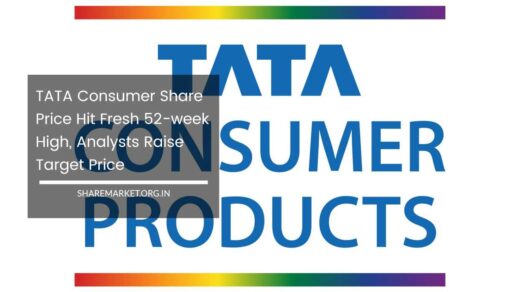Why is Honasa Consumer Share Falling?

Honasa Consumer Share
Honasa Consumer: Mamaearth’s Stock Fell 35% in 2 Days, Here’s Why
Honasa Consumer Shares: Shares of Honasa Consumer, the parent company of popular personal care brand Mamaearth, have taken a dramatic nosedive, losing 35% of their value in just two days.
The stock fell by 18% in early trade today, hitting a new 52-week low of Rs 242.4. This follows an even steeper drop of 20% on Monday, November 18, which triggered a lower circuit.
With the recent decline, the stock has now fallen almost 40% since the start of 2024.
This sharp decline has left investors alarmed, raising concerns about the future prospects of a company that once seemed poised for growth.
To make matters worse, Honasa Consumer reported its first-ever net loss in five quarters, sparking further uncertainty in the market.
In addition to the disappointing results, several major brokerage firms have downgraded the stock, citing the company’s struggling financials and the challenges it faces in executing its new business strategy.
Reasons for the Fall
There are several factors behind the dramatic fall in Honasa Consumer’s stock price:
1. Weak Financial Performance
The primary reason for the stock’s sharp decline is Honasa Consumer’s weak financial results for the September quarter.
The company reported a net loss of Rs 19 crore, a significant reversal from the net profit of Rs 29 crore reported in the same quarter a year ago.
This marks the first time in five quarters that the company has posted a loss, which naturally caused concern among investors.
In terms of revenue, the company saw a 7% year-on-year decline to Rs 462 crore, down from Rs 496 crore in Q2 FY23.
Although the decline in revenue isn’t drastic, it reflects weakening demand and possibly some disruption in the company’s business operations.
On the other hand, Honasa Consumer’s total expenditure increased by 9% to Rs 506 crore during the same period, which indicates rising operational costs and potentially inefficiencies that have contributed to the loss.
The increase in costs, particularly in sales and distribution, could be attributed to the company’s aggressive expansion plans, including its new focus on direct-to-consumer (D2C) channels.
This has not only increased its marketing and logistics costs but may have also led to inventory-related issues, affecting profitability.
2. Strategic Shift to D2C Model (Project ‘Neev’)
Another key factor behind the poor financial performance is Honasa Consumer’s pivot toward a direct-to-consumer (D2C) distribution model under its new initiative, Project ‘Neev’.
The shift to D2C involves moving away from traditional retail channels in favor of reaching customers directly through online platforms, including the company’s own e-commerce sites.
While this strategy offers long-term growth potential by cutting out intermediaries and creating direct relationships with customers, it has come with significant short-term challenges.
The transition to D2C likely required substantial upfront investment in technology, marketing, and logistics.
Additionally, the change in distribution strategy led to some inventory adjustments, contributing to the increased costs and slower-than-expected revenue growth.
The adjustment to a D2C model can be especially difficult for a company like Honasa Consumer, which has relied heavily on retail partnerships for brand visibility and consumer reach.
The higher costs associated with direct selling, such as customer acquisition costs and fulfillment expenses, have likely put pressure on margins and short-term profitability.
3. Increased Competition and Market Saturation
Honasa Consumer is not the only player in the personal care and beauty space, and it faces mounting competition from both established FMCG giants and other emerging D2C startups.
Brands like Hindustan Unilever and Procter & Gamble have established strong footholds in the Indian market, while new entrants in the D2C space are offering competitive products at lower prices.
As the market becomes more saturated, the challenge for Honasa Consumer will be to differentiate itself and maintain the growth trajectory it enjoyed in its early years.
While Mamaearth has built a strong brand around natural and sustainable personal care products, the growing competition from both local and global players threatens its market share.
Without a clear competitive edge or a solid strategy to retain customers, it could find it harder to expand its customer base.
4. Stock Downgrades by Brokerages
Following the disappointing quarterly results, several leading brokerage firms downgraded their ratings and target prices for Honasa Consumer.
This has added further pressure on the stock, which was already underperforming. Analyst downgrades and reduced target prices are often signals to the market that investor sentiment has soured.
Here is a summary of the latest brokerage views on Honasa Consumer:
| Brokerage | Latest Rating | Previous Rating | Latest Target Price | Previous Target Price |
|---|---|---|---|---|
| Goldman Sachs | Neutral | Buy | 375 | 570 |
| JP Morgan | Underweight | N/A | 330 | N/A |
| Kotak Institutional | Reduce | Add | 340 | 475 |
| Emkay Global | Sell | Buy | 300 | 600 |
| Jefferies | Buy | Buy | 425 | N/A |
| JM Financial | Buy | Buy | 410 | 530 |
| ICICI Securities | Add | Buy | 400 | 550 |
- Goldman Sachs downgraded the stock to Neutral, reducing the target price from Rs 570 to Rs 375.
- JP Morgan cut its rating to Underweight and set a target of Rs 330.
- Kotak Institutional reduced its rating to Reduce from Add, with a revised target of Rs 340.
- Emkay Global downgraded the stock to Sell, setting a target price of Rs 300.
- Jefferies and JM Financial retained their Buy ratings, expressing confidence in the company’s ability to recover, despite the recent setbacks.
- ICICI Securities lowered its rating to Add from Buy, with a revised target of Rs 400.
The downgrades are a clear signal that analysts are cautious about Honasa Consumer’s near-term outlook.
Many are concerned about the sustainability of the D2C strategy and the company’s ability to deliver consistent growth in an increasingly competitive market.
Looking Ahead
Despite the recent setbacks, Honasa Consumer is not without its potential. The brand still holds strong consumer loyalty, particularly in the natural and organic beauty and personal care segments, which have seen increasing demand in recent years.
If the company can streamline its operations, reduce costs, and stabilize its business model, it could still have a promising future.
The next few quarters will be critical for Honasa Consumer as it works to stabilize its finances, improve margins, and execute on its strategic initiatives.
The company will need to demonstrate that its D2C model can scale effectively and that it can navigate the tough competitive environment.
Investors will be watching closely for any signs of recovery, but for now, the stock remains highly volatile, and caution is advised.

















